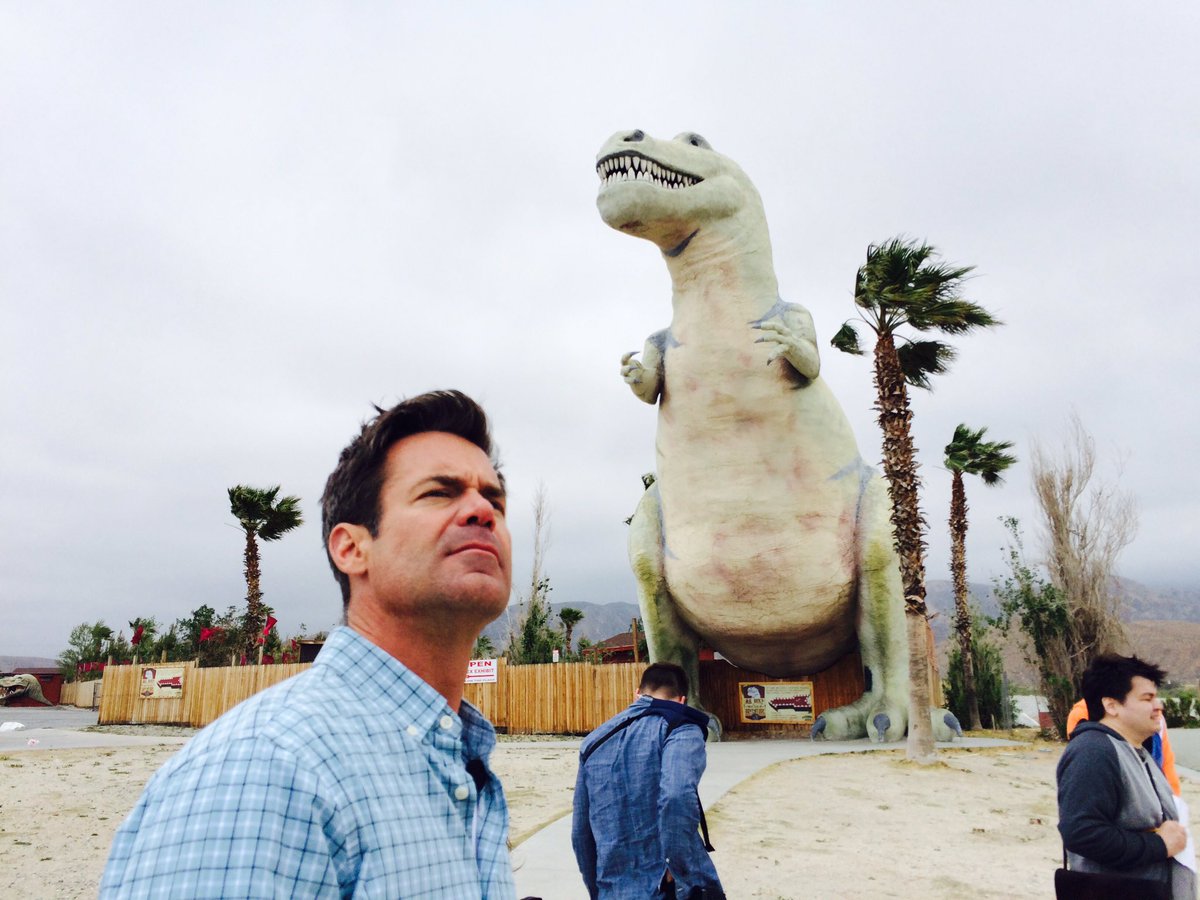One of the more colorful documentaries being screened during the 2016 Frameline Film Festival covers a lot of ground by exploring the life of Orry-Kelly, a native of Kiama, Australia who grew up to become the famous Hollywood costume designer who won the Academy Award for Best Costume Design three times (for his work on 1951's An American in Paris, 1957's Les Girls, and 1959's Some Like It Hot).
| Orry-Kelly fitting one of Marilyn Monroe's costumes for 1959's Some Like It Hot |
Gillian Armstrong's documentary, Women He's Undressed, describes how Kelly (who was born in 1897), left his small town to seek fame and fortune in New York. His early career included a brief stint as a chorus boy with a talent for dropping the female dancers he was supposed to be lifting.
While in New York, Kelly met and fell in love with a young Irish immigrant named Archibald MacLeish (who later became famous as Cary Grant). Kelly worked as a set painter and costume designer while MacLeish went on auditions and worked as an escort. Unknown and barely making enough to survive on, they lived an openly gay lifestyle and were very much in love.
Things changed when they moved to Hollywood in the 1930s. Soon after he started getting work as a film actor and changed his name, Cary Grant (who was then living with Randolph Scott) ditched Kelly and went back into the closet -- marrying three different women in an effort to keep his bisexuality hidden. Kelly kept moving up the ladder and eventually became the head costume designer for Warner Brothers. During World War II, his newspaper column ("Hollywood Fashion Parade") was published by William Randolph Hearst's powerful International News Service.
| Orry-Kelly dressing Ava Gardner for 1948's movie musical One Touch of Venus (Photo: Universal Pictures/Photofest) |
Kelly had an uncanny ability to design costumes for Hollywood's female stars that would mask any problems with their bodies. In the 32 years he designed films for Hollywood's major studios, he worked on nearly 300 films ranging from Busby Berkeley's movie musicals (Gold Diggers of 1933, 42nd Street, Dames, Gold Diggers of 1935, Gold Diggers of 1937, Stage Struck, Hollywood Hotel) to On Your Toes, The Dolly Sisters, One Touch of Venus, Oklahoma! Wonderful Town, and Gypsy.
Among the famous films he worked on are The Petrified Forest, Kid Galahad, Jezebel, The Private Lives of Elizabeth and Essex, The Sea Hawk, Casablanca, Now, Voyager and Auntie Mame. From Bette Davis, Barbara Stanwyck and Kate Hepburn to Dolores del Rio, Olivia de Havilland, and Ava Gardner, his work was innovative, imaginative, and often copied by dress manufacturers. One of the few people in Hollywood who stand and would stamd up to Jack Warner, his circle of friends included Rosalind Russell, Ann Warner, and George Cukor.
| Cover art for Orry-Kelly's book, Women I've Undressed |
Among the documentary's numerous talking heads are Jack Warner's daughter (Barbara Warner Howard), costume historian Larry McQueen, film critic Leonard Maltin, authors Martin Sherman and David Chierichetti, and actresses Jane Fonda and Angela Lansbury. A bevy of costume designers from Catherine Martin and Michael Wilkinson to Deborah Nadoolman Landis and Colleen Atwood offer concise professional insights into the details that made Kelly's work so impressive. The legendary Ann Roth describes Kelly's great wit and personality, relating how one night, when a policeman handcuffed the drunken costume designer for jaywalking, Kelly asked the officer "How fast was I going?"
| Orry-Kelly at the Academy Awards |
Women He's Undressed switches back and forth between three tracks: The story of how Orry-Kelly managed to lead an openly gay lifestyle in an extremely homophobic industry, a cavalcade of the costumes he designed (with detailed analysis by other costume designers), and numerous fanciful narrative sequences in which Darren Gilshenan appears as Orry-Kelly and Deborah Kennedy portrays his mother, Florence Kelly.
| Louis Alexander as young Orry-Kelly in one of the fantasy sequences from Women He's Undressed |
There's plenty of material in Women He's Undressed to satisfy movie buffs, fashion fans, and those hungry for Hollywood gossip (hat tip to Scotty Bowers). Here's the trailer:
* * * * * * * * *
A tremendous amount of imagination went into the design and execution of the blueprints for America's movie palaces and the sketches for Orry-Kelly's costumes. But sometimes imagination is used in pursuit of more ephemeral results. As Eric Ting, the new Artistic Director of the California Shakespeare Theater explains:“There are reasons Shakespeare’s work has so often been the vehicle by which artists have sought to change the way we see things. Perhaps it’s the perception that his stories hold universal truths, pathways towards empathy; perhaps it’s the four centuries of tradition that we push against and in that pressure, forge something new. Perhaps it’s that undefinable alchemy that happens when an audience suspends disbelief, gives over, says YES -- that moment when anything is possible. The poor become rich, the broken-hearted healed, man becomes woman, and woman becomes man.”
 |
| Erik Flatmo's unit set for Much Ado About Nothing (Photo by: Alessandra Mello) |
To open its 2016 summer season, CalShakes invited director Jackson Gay to stage the adaptation of Much Ado About Nothing that she crafted with Kenneth Lin (who wrote additional text to set up the action). Working on an attractive unit set designed by Erik Flatmo, they have found a simple yet remarkably effective device that allows them to cast Shakespeare's comedy in nontraditional methods.
As the audience enters the Bruns Memorial Amphitheater, they see a large gate leading to an estate's garden. There are a series of chairs upstage and a catering truck with its back open for loading. Most of the cast initially appears as cater-waiters cleaning up after a festive event. The evening's entertainer (Patrick Alparone) is still waiting to be paid by the event's hostess. As the staff replaces plates and glasses into their cardboard cartons, they are forced to hang around until they are free to go home.
While they wait, they might as well amuse themselves. Thus, the catering supervisor (Anthony Fusco) assigns the roles from Much Ado About Nothing to his wait staff, knowing them well enough to match their personalities to specific characters. The easiest choices are two members of his team who are constantly bickering and trading insults. To make matters more interesting, he casts the man (James Carpenter) as a woman (Beatrice) and the woman (Stacy Ross) as a man (Benedick).
 |
| The cast of Much Ado About Nothing (Photo by: Alessandra Mello) |
Many in the CalShakes audience are keenly aware that these are two of the most versatile actors in the Bay area. Not only is casting them in gender-crossed roles bound to spark friction between their characters, it allows Carpenter and Ross to demonstrate their dramatic chops in a whole new way. As Ting explains:
“Who amongst us has not yearned to be something we are not? Braver, prettier, smarter, younger, older, faster, slower, richer, wiser, a woman, a man. The theater affords us (in those moments between the curtain's rise and fall) the power to transform ourselves. to imagine ourselves as something more. When Beatrice exhorts 'O that I were a man,' she yearns to be seen as a man for the respect and rights afforded the men that surround her. Theater, especially the works of William Shakespeare, have time and time again empowered us to see -- and be seen -- differently.”
 |
| Stacy Ross as Benedick in a scene from Shakespeare's Much Ado About Nothing (Photo by: Alessandra Mello) |
“In the 1950s, when many theaters were still segregated, we turned to nontraditional casting to transform how audiences saw. Consider James Earl Jones as King Lear, or the many times women have sought to break the glass ceiling, including the more than 200 actresses who have portrayed Hamlet.”
 |
| James Carpenter as Beatrice in a scene from Shakespeare's Much Ado About Nothing (Photo by: Alessandra Mello) |
First published in 1623, Much Ado About Nothing is one of Shakespeare's rowdiest comedies. This production marked the company debuts of two wonderful actresses (Denmo Ibrahim and Safiya Fredericks) who have been working steadily on Bay area stages. When placed in the company of such CalShakes veterans as Patrick Alparone (as Don John, Balthasar, and a watchman), Rami Margron (as Margaret, Borachio, and a Friar), and Anthony Fusco (doubling as Leonato and a riotously inarticulate Dogberry), these two women were a welcome addition to the company. Fredericks appeared as Hero (a female) and Ibrahim as Hero's beloved, Claudio (a man). A special shoutout goes to Lance Gardner, who doubled as a somewhat serious Don Pedro and a delightfully ditsy Ursula.
Any purists who might have begun the evening harboring doubts about the wisdom of cross-gender casting were joyously entertained and thoroughly schooled in the pliability of Shakespeare's comedy. As the lover with the shortest temper and most unresolved issues, Stacy Ross's performance was mercurial -- rocking out when she thought she had scored a triumph yet hurt and humbled when Benedick was put in his place. Matching her every step of the way was James Carpenter's delicious portrayal of Beatrice -- a much more subtle approach that could alternate scathing put-downs with suggestions of vulnerability while hinting at coyness and emotional depth with a rare delicacy and moments of surprising minimalism.
 |
| Beatrice (James Carpenter) and Benedick (Stacy Ross) in a scene from Much Ado About Nothing (Photo by: Alessandra Mello) |
It's obvious that Eric Ting is off to a rousing start as the company's new artistic director, with many exciting theatrical adventures yet to come. A minor (and welcome) change in the program's editorial guidelines is the more formal use of Mr. and Ms. in each artist's bio. As Aretha Franklin would sing: R-E-S-P-E-C-T!
Performances of Much Ado About Nothing continue through June 19 at the Bruns Memorial Amphitheater in Orinda (click here for tickets).





